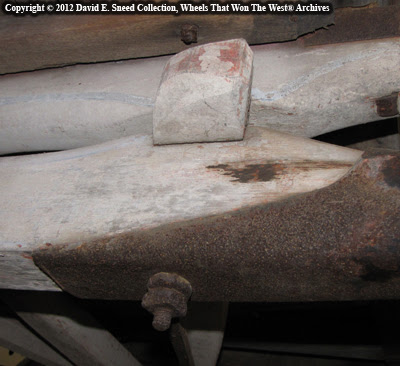As I shared last week, there are a number of features seen on many surviving dead axle (sans springs) wagons today that were not traditionally available on early vehicles. One area of difference is that of the primary assembly methods of early wagons.
Most wagon gears from the 1870’s and before are through-bolted. That is, the axles, bolsters and sandboards are connected by drilling holes through them and bolting the sections together. After this timeframe, it is possible to see both through-bolted and ‘clipped’ gears. Instead of using straight bolts to connect the various gear sections, clipped running gears are essentially held together by a series of U-bolts wrapped around the same areas.
While some makers persisted in using the older, through-bolted system well into the 20th century, after the 1880’s, many major manufacturers had made the switch to clipped construction within their higher priced offerings as it was touted to provide stronger support.
Today, there are surviving examples of both types of construction. Was one truly better than the other? The answer often lies within the type of terrain and specific uses a vehicle might be subjected to. Certainly not all wagons needed heavier reinforcement – nor the cost associated with it. Beyond all of these details, the primary point I’m making is that we owe it to future generations to pass along accurate history. Recognizing vehicle facts along with specific features commonplace in certain eras is the first step in helping showcase the true history of America’s earliest transportation industry.

